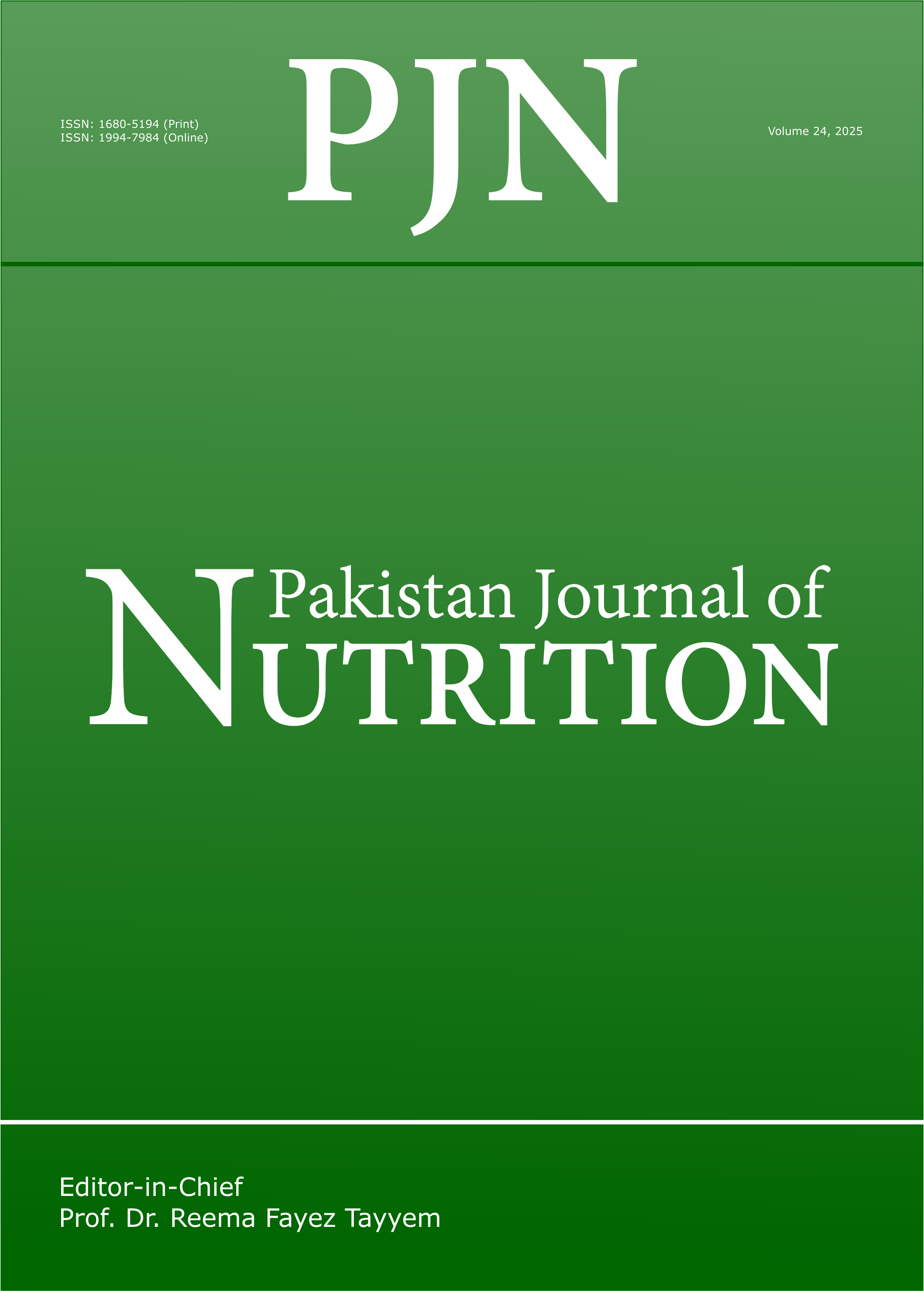Serum Zinc and Copper Levels in Malnourished Pre-School Age Children in Jos, North Central Nigeria
DOI:
https://doi.org/10.3923/pjn.2007.349.354Keywords:
Copper, deficiency, malnutrition, pre-school age, ZincAbstract
Serum zinc and copper were determined in thirty (30) malnourished pre-school-age children (age, 0-60 months) and thirty (30) age-and sex-matched apparently healthy well nourished controls to evaluate the effect of protein-energy malnutrition on serum zinc and copper. Mean serum zinc and copper were significantly reduced (p<0.05) in malnourished than in well-nourished children. While serum total protein was significantly lower (p<0.05) in malnourished than the controls, and comparable (p>0.05) among kwashiorkor and marasmus, serum albumin was significantly lower (p<0.05) in kwashiorkor than in marasmus. Mean haemoglobin concentration was significantly (p<0.05) lower in malnourished than in the controls while total white blood cell count (TWBC) did not differ significantly (P>0.05). This study shows that malnourished children have deficient serum zinc and copper with anaemia and leucopenia. For effective management of protein-energy malnutrition, zinc and copper supplementation should be part of treatment regimen, however, in order to prevent zinc and copper deficiency and its health implications in pre-school age children, food fortification should be promoted.
Downloads
Published
Issue
Section
License
Copyright (c) 2007 Asian Network for Scientific Information

This work is licensed under a Creative Commons Attribution 4.0 International License.
This is an open access article distributed under the terms of the Creative Commons Attribution License, which permits unrestricted use, distribution and reproduction in any medium, provided the original author and source are credited.

